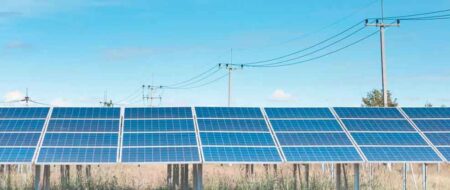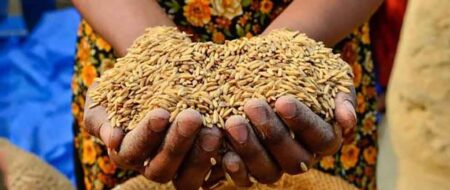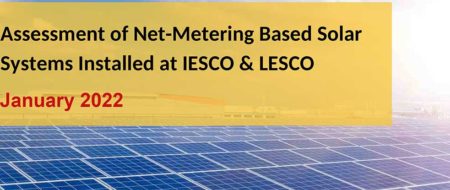A Common Regional Position on Agriculture in Trade Negotiations
For many reasons, agriculture has become a linchpin for the ongoing WTO-mandated negotiations. In the first place, the developing countries (DCs) genuinely feel that they were shortchanged during the Uruguay Round of Multilateral Negotiations, for market access promises did not go beyond lip-service. The Hong Kong Ministerial Conference (HKMC) too failed to further the Doha Development Agenda (DDA), as all big-ticket items, like domestic support and market access, were studiously deferred for future negotiations. Since HKMC, the DCs and Least Developed Countries (LDCs) had been proactively engaged in Geneva-based work, but ministers were unable to agree on modalities that could be fleshed out into political decision satisfying the long-outstanding demand of the DCs and LDCs.
There also remain wide divergences among the Members on numbers, as was reflected by the large number of square brackets in the Draft Possible Modalities for Agriculture released on June 22, 2006.
Since the G8[1] Summit in St. Petersburg in July this year, the G6[2] meetings in Geneva are focusing on reaching some political decision, and, to this end, the WTO Director General is mustering support. An ambitious outcome is not likely at this stage, but some cosmetic developments, in the form of a minimalist outcome to keep the negotiations alive, could be achieved. It would, however, be difficult this time for industrialized countries to deceive DCs and LDCs by furthering their agenda of unilateral trade liberalization.
This provides developing countries, especially members of the South Asian Association for Regional Cooperation (SAARC), an opportunity to articulate their common position, which shall also help underpin the long-term prospects of the region’s emergence as an effective political and economic bloc. Despite the existence of some sensitivities of regional member countries on common positions, and the fact that some members are less developed than others, it is still possible for these countries to agree, at least and to begin with, on a broader framework, for example on:
1. The cherished goal of securing market access for their agricultural products;
2. Minimization/removal of distortions, in the form of subsidies, on the global agricultural market place; and
3. Articulation of their special needs for Special and Differential Treatment (SDT).
Within this broader framework, regional member countries can further adjust their specific negotiating stance on issues like Special Products (SPs) and food aid, etc. Given, the political decisions of HKMC, the sensitivities of LDCs could be well taken care of, in terms of special treatment and duty and quota free access, even if they fully subscribe to a broader framework of the G20.[3] By agreeing to it, they can broaden their stake by involving others like G20, and possibly G33,[4] which will together make an effective and stronger coalition. This will help secure a meaningful gain in the negotiations that, in turn, shall serve two key purposes—they would be able to:
i) Translate market access gains into regional development, and
ii) Develop their own political and economic identity within the WTO.
It is likely that the US will agree to make more concessions in its proposal on domestic support, limiting its Overall Trade Distorting Support (OTDS) to closer to $15 billion, along with the use of 1995–2000 as the base period for product specific caps. These developments would bring the US and other countries closer to the G20 proposals, especially on market access and for the reduction in OTDS. On Green Box subsidies, SA countries can articulate their position seeking a commitment to review the Green and Blue Box criteria to ensure that these programs are truly non-trade distorting and production limiting. As such, it is likely that the WTO Members will converge to the G20 position on thresholds and tariff reduction formulae.
Thus, the G20 position provides a common ground. It is, therefore, essential that SAARC countries, in the first place, agree at least to the G20 proposal on tariff reductions and OTDS. Within this broader framework, other issues can be addressed. For example, there are wide divergences on modalities with respect to Sensitive Products. Given the proposals, linking formula between Sensitive Products with the expansion in Tariff Rate Quotas (TRQs), SA countries can agree on limiting the number of sensitive products to less than 2 percent, while asking for enhanced expansion in TRQs. These countries need to realize that both TRQs and sensitive products came as exception under the July Framework, and agreeing to a larger number of sensitive products implies nurturing protection of import-sensitive products by the industrialized countries.
Whereas, there is also a wide divergence in the proposals for the number of SPs, there can be an agreement on a reasonable number, say, 5 percent tariff lines. This will, on the one hand, address their sensitivities, in terms of food security, livelihood and rural development, and on the other, will give them moral standing to compel industrialized countries to contain the number of sensitive products.
The Special Safeguard Mechanism (SSM) represents an important measure to protect vulnerable economies against import surges and low international prices arising from tariff reductions, and SAARC countries already have an almost common position on this issue.
The Chairman of the Agricultural Negotiating Committee released his Draft Possible Modalities for Agriculture on June 22, 2006. The text was comprehensive, but there remained wide divergences among Members on the quantitative values for virtually all modalities. Given the large number of square brackets in the Draft, reflecting the divergence in the positions of the Members, it was rather unlikely for Ministers to agree, especially because of lack of political will, on the draft modalities. Issues identified for Round One of negotiations in Geneva are summarized in the following box.
|
Agriculture – Round One Market Access – Tiered Formula for Tariff Reductions – Thresholds and cuts – Developed and Developing Countries – Sensitive Products – Designation – Treatment – Tariff cut – Tariff Quota Expansion – Special and Differential Treatment – Special Products — Designation — Treatment – Special Safeguard Mechanism – Coverage – Trigger and Remedy Domestic Support – Overall Reduction of Trade Distorting Domestic Support – Reduction in – Final Bound Total AMS – Blue box (cap) – De Minimis – Disciplines – Product Specific AMS Caps – Other criteria for Blue Box – Cotton
|
Whereas no decision could be reached in the July Mini-Ministerial, one would expect that in the days ahead efforts will be made by the Director General WTO and some Members on a bilateral basis to narrow down the differences. In this context, a common position would be rewarding for the region in the long run.
The key issues on the agenda and possible positions for regional countries are discussed below.
Market Access
It is expected that the WTO Members may converge to the G20 position on thresholds and tariff reduction formula. As of now, there remain significant differences in this area between the EU and the G20 proposals for developed countries, and only small differences for developing countries. It is, therefore, essential to maintain at least the G20 position on tariff reductions. In fact, they may be willing to go even further in terms of tariff cuts, if there is a consensus among them to do so, because their applied tariffs are generally much lower than bound tariffs, and they will also be entitled for less than full reciprocity under SDT.
There also exist wide divergences on modalities with respect to Sensitive Products. Proposals for the numbers to be designated range from 1 to 15 percent of tariff lines. It is expected that the EU and G10[5] will agree to a maximum of 8 percent, which still is a large number and is being opposed by many countries. In addition, there is no agreement on the size of the tariff reduction for Sensitive Products, with proposals ranging from 20 to 80 percent of the normal reductions (termed “deviations”). Furthermore, there is a proposed formula link between Sensitive Products with the expansion in TRQs. This formula takes into account the tariff reduction deviations: the larger the tariff deviation, the larger the expansion in the TRQs.
SAARC countries may like to limit the number of Sensitive Products to 1–2 percent of all tariff lines, as there are limited benefits to SA countries, only costs in terms of reduced market access. Limiting the designation of the number of sensitive products to 1–2 percent, however, appears to be unacceptable to many developed members of WTO. A possible alternative proposal on Sensitive Products could be to use a tiered approach with larger deviations being allowed for the initial set of designated tariff lines. For example, countries could be allowed up to [5] percent of tariff lines designated as Sensitive Products at [70] percent of the normal tariff reduction, and an additional [3] percent of tariff lines at [80] percent of the normal tariff reduction. In general, the greatest gains in additional trade will come from reducing the over-quota tariffs rather than expanding quotas (although in certain specific cases, this may not be true). Thus, it will be important to minimize the tariff deviation for Sensitive Products.
The three alternative formulae proposed by the Chairman, which link the tariff deviation to expansion of TRQs, would only result in relatively small increases in TRQs. SAARC countries mayprefer larger increases in TRQs, in the range of 100–200 percent as against 10–30 percent provided by these formulae. Each formula is applied to a different TRQ base: (i) bound tariff quota, (ii) domestic consumption, or (iii) imports. These reflect the differences of views among Members on the appropriate base for expansion. Initially, quotas were established with the obligation to expand to at least 5 percent of domestic consumption. It would appear that the formula linking expansion to current bound tariff quota provides the largest increase in TRQs. It would, however, be appropriate to link the TRQ expansion to current level of consumption.
Special and Differential Treatment
There is a wide divergence in the proposals for the number of Special Products that developing countries can designate, from 5 lines to 20 percent of all lines. Special Products would be subject to minimal or no reduction in tariffs. SA countries may like to limit the number of Special Products to 5 percent of all tariff lines, to secure both food security and related concerns, while securing trade opportunities at least among developing countries in some of the products.
The proposed Safeguard Mechanism (SSM) is an important instrument to protect vulnerable economies. SA countries therefore need to secure simpler yet efficient SSM during negotiations.
The US, which hitherto insisted on its position, may show some flexibility in its proposal on Domestic Support in the days ahead, closer to the G20 proposal for the reduction in OTDS, comprised of total AMS, product and non-product specific de minimis, and Blue Box. The OTDS provides a second “cap” on expenditures and recognizes that the Blue Box programs are trade distorting.
The G20 proposal for reductions in Total Aggregate Measure of Support (AMS) would require actual spending cuts (i.e. cuts in applied levels) by the EU and the US, while their own proposals do not. It appears that the G20 proposal for reduction in total AMS would be quite achievable for the US and the EU given expected spending patterns and policy reforms.
It is expected that the US may concur with the proposal of most other countries on the use of the 1995–2000 base period for product specific caps.
It is expected that the US will agree to eliminate both its product specific and non-product specific de minimis expenditures.
The capping of the Blue Box at 2.5 percent of the value of production (US proposal) will minimize the extent to which the US can shift expenditures from AMS to the Blue Box.
The countries of South Asia may like to have a commitment that spending under the Green and Blue Box programs are truly non-trade distorting and production limiting.
On the cotton initiative, SAARC countries need to support a larger reduction in domestic support for cotton, compared to other commodities, as proposed under the formula outlined in paragraph 87 of HKMD. Reduction in domestic support is very important for cotton to achieve any significant impact on global cotton prices. South Asian countries, given their sensitivity in this area, may seek to negotiate duty- and quota-free access for cotton for all DCs and LDCs across the board.
Conclusion
|
No doubt, the countries of the region have differences, not only in the political but also the economic fields—importantly, even in trade. Yet, as discussed above, there are a number of points in the agriculture negotiations where a common regional position and stance can be adopted. It may be pertinent to note here that the trend is not specific to this region, but developing nations from all over the world are striving for common positions on key issues in the stalled Doha negotiations.
[1] The group of leading developed nations (US, UK, Japan, France, Germany, Italy, Canada) and Russia. While not a permanent organization, the summits of the leaders of G8 are believed to be setting political as well as economic agenda for the world.
[2] Six key players in WTO negotiations, i.e. EU, the US, Australia, Brazil, India and Japan. Brazil and India claim to be representing the DCs/LDCs in the group, a notion not shared by all the DCs/LDCs.
[3] G-20 group of developing countries was established on 20 August 2003, in the final stages of the preparations for the V Ministerial Conference of the WTO, held in Cancun, from 10 to 14 September 2003. Its focus is on agriculture, the central issue of the Doha Development Agenda.
It has become one of the most important groupings in the WTO negotiation since the Cancun ministerial in 2003. The group has recently proposed a compromise formula for tariff reduction, which has been widely accepted as a basis for further negotiation. While arguing for the limited use of “sensitive products” (a mechanism which would mainly benefit developed countries), the group is more supportive to the “special products” (SPs) and “special safeguard mechanism” (SSM) favoured by the G33. (Jacques Chai Chomthongdi, August 16, 2005, ‘The “G Guide” Groupings in the WTO Agriculture Negotiations,’ Focus on the Global South [www.focusweb.org], Viewed December 12, 2006.)
[4] The G33, or “friends of special products” is understood to comprise of 42 countries (including China, India, Pakistan and Turkey) opposing the harmonization of tariffs across countries, and insisting on taking into account the different tariff structures of developing countries. The G33 is the main proponent of SPs and SSM. (Ibid.)
[5] Group of ten countries (Bulgaria, Chinese Taipei, Republic of Korea, Iceland, Israel, Japan, Liechtenstein, Mauritius, Norway and Switzerland) with the most defensive interest in the agriculture negotiation. It argues for a free determination of products to be designated as sensitive. (Ibid.)











